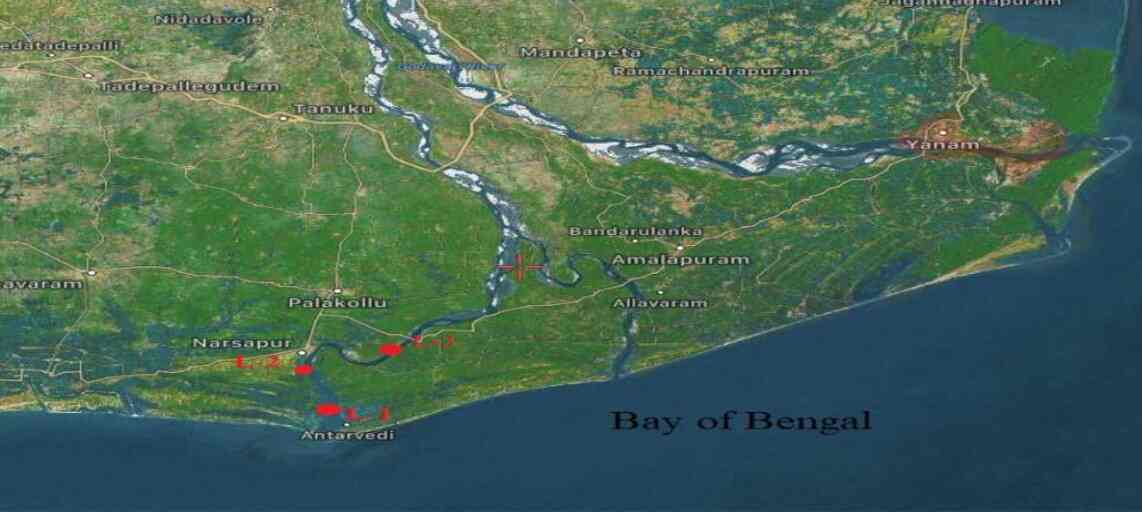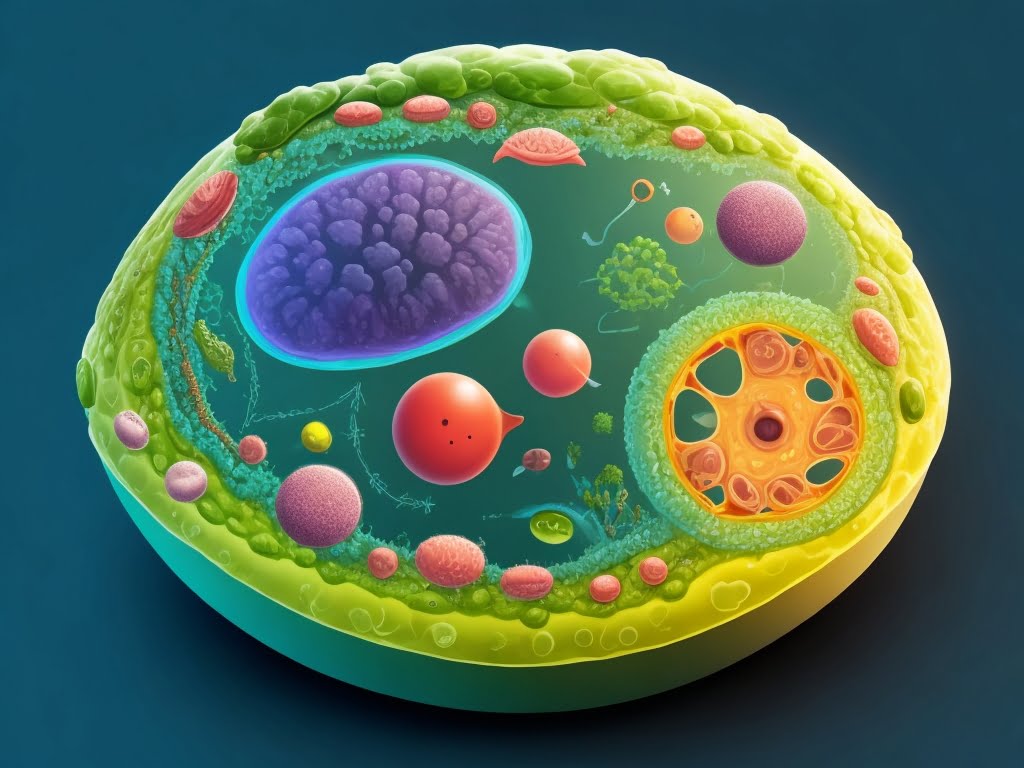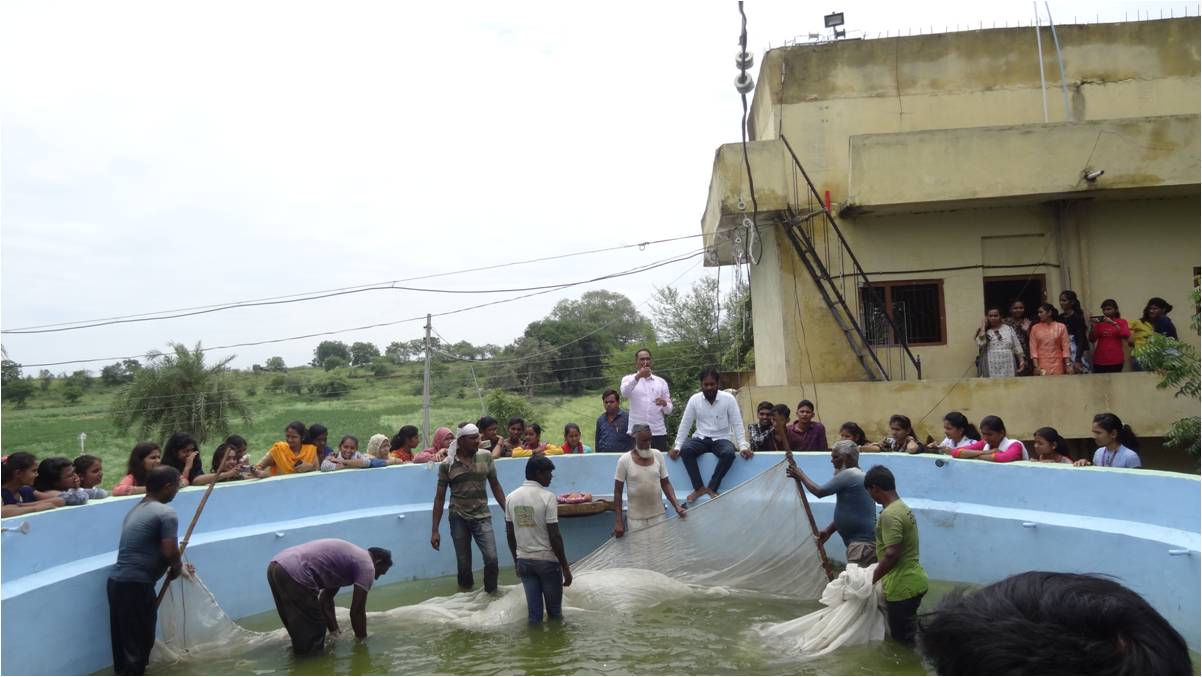Natural Breeding of Fishes in Bundhs (Bundh breeding): Natural breeding of fishes in bundhs is a simple and effective method of fish production. It is based on the principle of creating a simulated riverine environment in a bundh, which stimulates the spawning of fish. Bundhs are traditionally used for fish production in India and Bangladesh.
Natural Breeding of Fishes in Bundhs
The natural bundhs are special types of ponds where natural riverine conditions or any natural water resource conditions are managed for the breeding of culturable fishes. These specially designed bundhs are constructed in large low-lying area having facility to accommodate large quantity of rain water. These bundhs are having an outlet for the exit of excess rain water. The shallow area of such bundhs is always used as spawning ground. These bundhs are of three types:
(1) Wet bundh.
(3) Modern bundh.
(2) Dry bundth.
1. Wet bundh.
The ponds specially constructed for fish breeding having water throughout the year are known as wet bundhs or perennial bundhs (Fig. 1).
 |
| Wet bundh |
An inlet is formed at the higher level of bundh for the entrance of the water while an outlet is prepared in low lying area for the exit of the water from the bundh. The flow of water from outlet is controlled with the help of bamboo fencing. ‘Natural Breeding of Fishes in Bundhs’
2. Dry bundh.
This type of ponds is purely seasonal with shallow water areas. This is constructed by keeping soil walls from three sides and open area from one side. In monsoon period rain water flows towards this bundh and fills the pond. But after monsoon water this bundh dries up after a month or two (Fig. 2).
 |
| Dry Bundh |
3. Modern bundh.
This is known as ‘Pucca bundh’. It is a masony construction and a sluice gate at the lower-most level of the bundh is the characteristic feature. The total exit of water from the bundh is possible by this gate so that after each spawning, bundh is cleared of water. According to the breeding nature of different fishes, suitable bundhs are used for spawning. ‘Natural Breeding of Fishes in Bundhs’
Prerequisites of Bundh Breeding:
For successful bundh breeding the prerequisites are:
(1) Heavy showers during the monsoon season.
(2) Flow of water from up-land to bundhs and then through outlet, makes some sort of water
current.
(3) Inlet and outlet of the bundhs are to be kept closed after the water level reaches brim point.
(4) Sudden fall of temperature.
(5) No definite depth for breeding, as breeding can take place even in paddy fields having a
depth of 31-35 cm.
(6) Smaller fishes first get inducement to breed and the bigger ones are attracted later.
Process of Bundh Breeding
The process of bundh breeding is as follows:
- The bundh is filled with water during the monsoon season.
- The inlet and outlet of the bundh are closed. This is to prevent the water from flowing out of the bundh.
- The water level in the bundh is monitored. If the water level rises too high, the outlet is opened to allow some of the water to flow out.
- The water temperature is monitored. If the water temperature drops too low, the inlet is opened to allow some of the warm water from the catchment area to flow in.
- The fish in the bundh are observed for signs of spawning. Signs of spawning include the fish chasing each other and the females releasing their eggs.
- Once spawning has occurred, the inlet and outlet of the bundh are opened. This allows the fry to escape from the bundh and to enter the catchment area.
Advantages of Bundh Breeding
There are several advantages to bundh breeding:
- It is a simple and inexpensive method of fish production.
- It is a natural method of fish production that does not require the use of chemicals or hormones.
- It can be used to produce a variety of fish species.
- It is a sustainable method of fish production that can be used in conjunction with other agricultural activities.
Disadvantages of Bundh Breeding:
(1) Indiscriminate killing of brood fishes particularly milters during dry months, result in
improper sex ratio.
(2) It is not possible to hygienically maintain mud hatching pits.
(3) Large scale mortality of spawn takes place as they are not transported before the 3rd day. “Natural Breeding of Fishes in Bundhs”
(4) Other limiting factors for successful spawning are:
(a) Presence of excessive numbers of copepods (Cyclops, Diaptomus, etc.) that accumulate in the
water of the bundh.
(b) Large scale deposition of alluvium in the breeding grounds.







